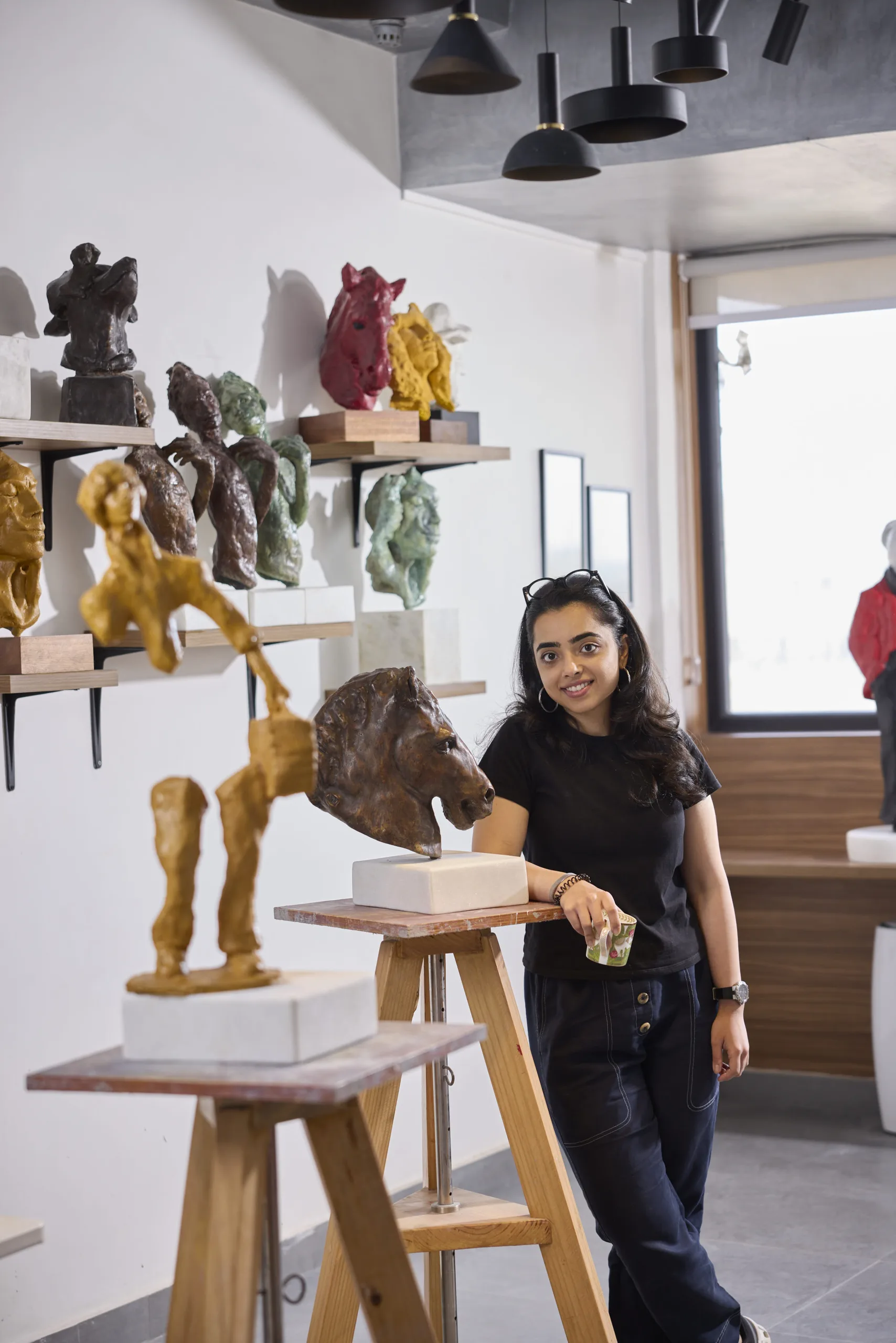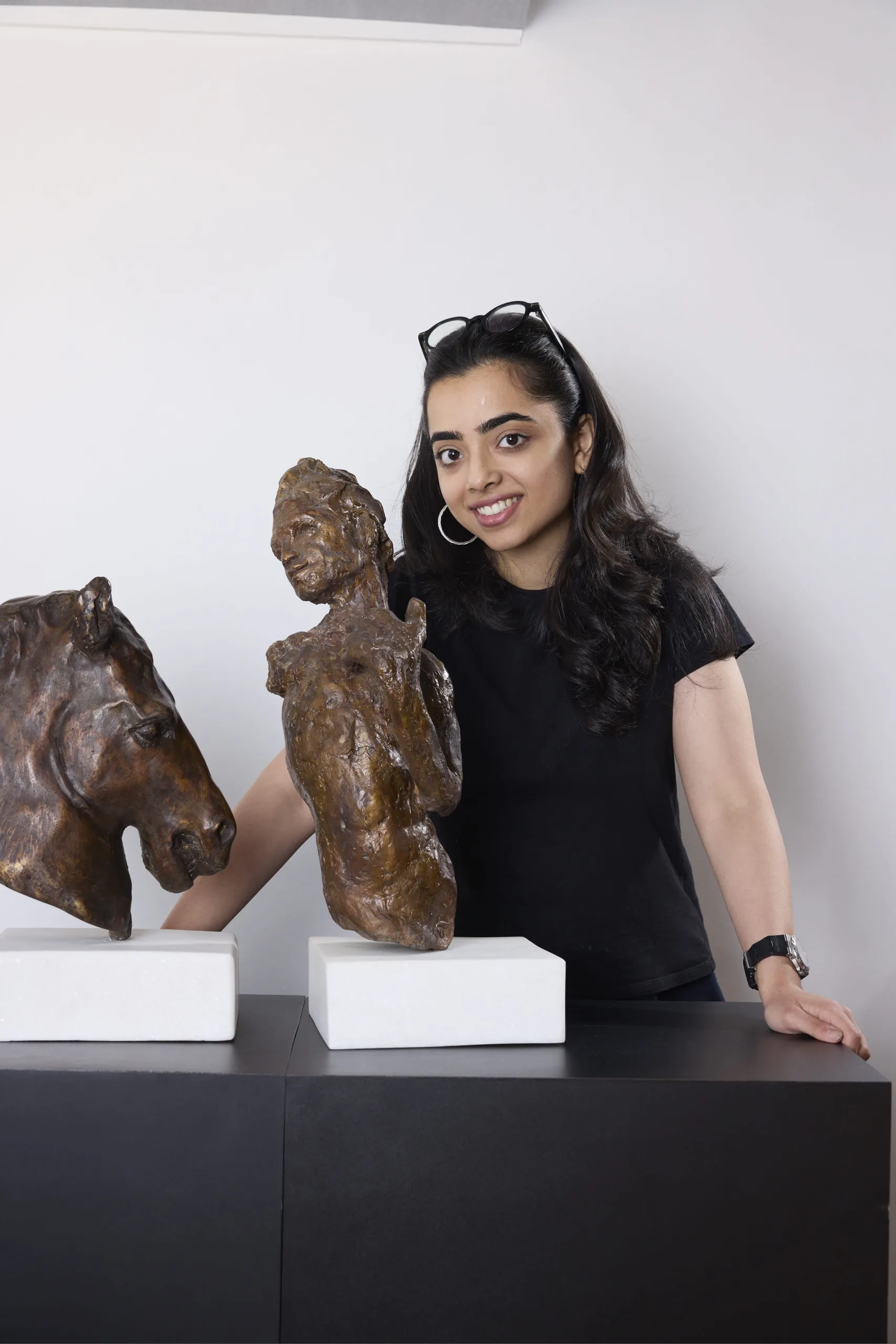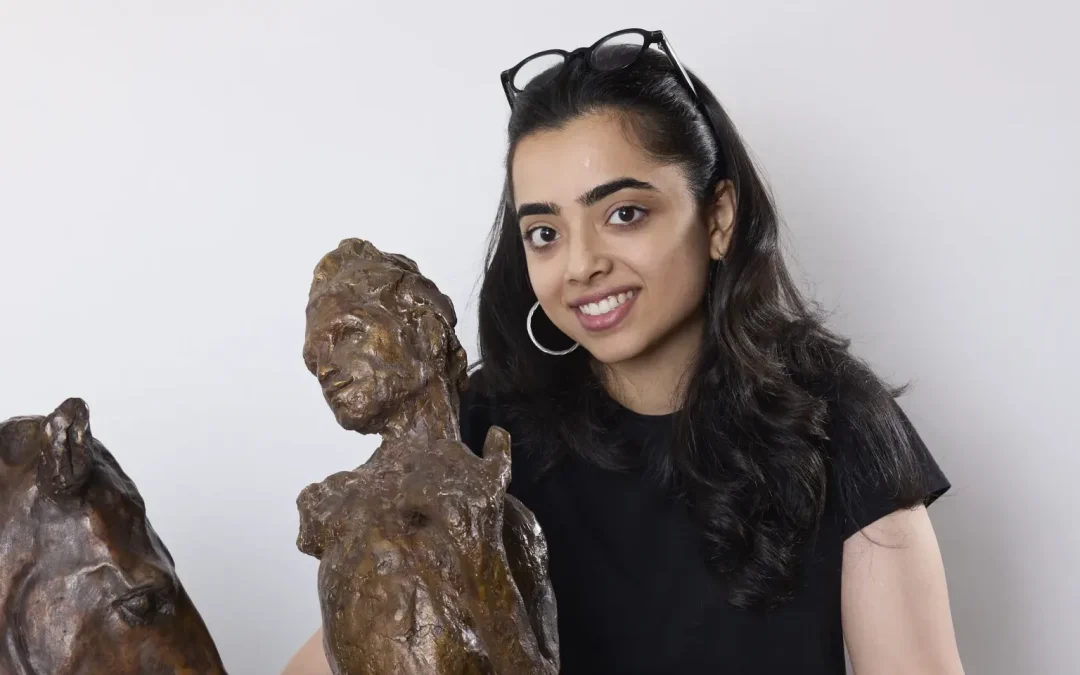Niyamat Mehta, a rising star in the Indian contemporary art scene, has been captivating audiences with his stunning sculptures. With his unique blend of classical techniques and contemporary aesthetics, he has garnered international recognition and collaborated with prestigious galleries worldwide. In this exclusive interview, we delve into his artistic journey, his inspirations, and his vision for the future of sculpture.
- How has signing with four international galleries influenced your artistic journey?
Signing with international galleries has been an incredibly humbling experience. Collaborating with art advisors and curators from different countries has exposed me to diverse perspectives and interpretations of art, broadening my horizons. It has been positive so far, and I am excited about the opportunity to collaborate with recognised and blue chip galleries in the future.
- What do you hope to achieve through your collaborations with Red Eight Gallery, The London Art Exchange, Moonflower Fine Art, and Shiro Studio?
As an artist, my vision is simple and straightforward. I aim to expand the collectorship for my sculptures, and I believe that being represented by reputed galleries with a strong and loyal clientele is an ideal way to achieve this.
- Can you discuss the significance of your recent exhibitions in London and Singapore for your career as a sculptor?
It has been an absolutely overwhelming experience, in the best possible way. As I’ve mentioned before, working with the right gallery is crucial, and these exhibitions have provided incredible exposure. I had the opportunity to connect with numerous people from the art world who showed genuine interest in my work, and I received valuable feedback from senior artists. These experiences have been inspiring and I’m eager to participate in more exhibitions like these. Gaining fresh perspectives on my work has proven to be incredibly helpful as well.

- How do you balance your role as an artist with your entrepreneurial ventures in the art world?
Being an artist is, in many ways, similar to being an entrepreneur—the key difference is that my creative process keeps me away from a screen most of the time. Entrepreneurship is crucial for artists, as it involves understanding which galleries to approach, determining how to price artwork, and building connections within the art world. I balance these roles by focusing primarily on creating my sculptures and then considering which gallery would be the best fit for each piece or how a particular work might lead to new commissions. My mind is always active, driven by the question, “What’s next?”
- What inspired you to start conducting masterclasses, and what do you aim to impart to your students?
Towards the end of my training at The Florence Academy of Art, I often found myself in the year 1 or 2 studios critiquing students. It was when I realized that I have a knack to teach and make students understand what’s in my mind clearly and simply. When I opened Atelier Della Firenze in New Delhi, I knew I was going to conduct masterclasses. It’s nice because I feel like I’m giving back to the art world and training the next generation of sculptors.
- How do you see the role of emerging artists in shaping the future of the global art scene?
I believe that emerging artists are the masters of tomorrow. The artists we now regard as legends were once considered emerging in their time. I feel incredibly fortunate to be part of the current ecosystem, which offers an abundance of resources both within and beyond the art world. This environment provides emerging artists with unparalleled opportunities to shape the future of the global art scene.
- What challenges have you faced while establishing your presence in international galleries, and how have you overcome them?
Challenges are inevitable when establishing a presence in international galleries. My approach is simple: I accept that not everyone will resonate with my work—some will love it, while others may not. This understanding has helped me develop a thicker skin, especially since my artwork is deeply personal to me. While I’ve been fortunate so far, I know challenges will continue to arise. However, I remain optimistic, knowing that for every person who doesn’t connect with my work, there will always be others who do.

- In what ways do you think your unique sculptural style resonates with contemporary art trends?
My style is more or less contemporary. The technique I use is classical called “Drawing in space” but the style, color scheme is quite contemporary. Even though the way sculpt is classically executed, the ideology is contemporary.
- How has your experience studying and teaching in Europe shaped your approach to art in India?
Studying and teaching in Europe provided me with an invaluable education in sculpture, allowing me to learn everything I could possibly imagine about the art form. It has given me a solid foundation, refined techniques, and a level of confidence that continues to shape my approach to art in India. These fundamentals and skills are principles I will hold onto and rely on throughout my life.
- What advice would you give to young artists looking to break into the international markets?
Breaking into the international art market is not easy. To begin with, your work must be of the highest quality—absolutely top-grade. Invest in professional photography to showcase your art effectively. Most importantly, focus on building genuine relationships. Be approachable, share your journey, and discuss your work with others. If you sense genuine interest, take the next step and arrange to meet them in person. The art world is highly competitive, so your priority should always be creating exceptional, top-tier work that stands out.

